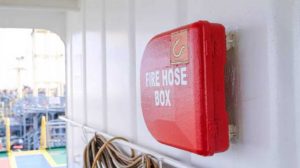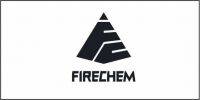 Fire risk analysis is a critical aspect of ensuring the safety and security of residential buildings. By employing scenario clusters, a comprehensive approach to assessing and managing fire risks can be developed, aiding in effective fire risk management strategies. Here’s an in-depth exploration of this concept:
Fire risk analysis is a critical aspect of ensuring the safety and security of residential buildings. By employing scenario clusters, a comprehensive approach to assessing and managing fire risks can be developed, aiding in effective fire risk management strategies. Here’s an in-depth exploration of this concept:
-
 Scenario Clusters: In fire risk analysis, scenario clusters refer to groups of potential fire scenarios based on various factors such as building structure, occupancy, fire load, and ignition sources. These clusters allow for a systematic evaluation of different types of fire risks that may arise in residential buildings. For example, scenarios could include kitchen fires, electrical fires, or fires caused by smoking materials.
Scenario Clusters: In fire risk analysis, scenario clusters refer to groups of potential fire scenarios based on various factors such as building structure, occupancy, fire load, and ignition sources. These clusters allow for a systematic evaluation of different types of fire risks that may arise in residential buildings. For example, scenarios could include kitchen fires, electrical fires, or fires caused by smoking materials. - Data Collection and Analysis: The first step in utilizing scenario clusters is to gather relevant data about the residential building and its occupants. This includes information on building construction, fire protection systems, occupant behavior, and historical fire incidents. By analyzing this data, patterns and trends can be identified, leading to the creation of scenario clusters representing the most probable fire scenarios.
- Risk Assessment: Once scenario clusters are established, a risk assessment can be conducted for each cluster. This involves evaluating the likelihood of each scenario occurring and the potential consequences if it does. Factors such as the presence of fire suppression systems, building layout, and occupant demographics are taken into account. By assigning probabilities and consequences to each scenario, an overall risk profile for the residential building can be developed.
-
 Mitigation Strategies: Based on the findings of the risk assessment, appropriate mitigation strategies can be implemented to reduce the likelihood and severity of fire incidents. This may include measures such as installing smoke detectors, implementing fire safety education programs for residents, improving building construction standards, and enhancing fire suppression systems. Mitigation strategies can be tailored to address specific scenario clusters, focusing resources where they will have the greatest impact.
Mitigation Strategies: Based on the findings of the risk assessment, appropriate mitigation strategies can be implemented to reduce the likelihood and severity of fire incidents. This may include measures such as installing smoke detectors, implementing fire safety education programs for residents, improving building construction standards, and enhancing fire suppression systems. Mitigation strategies can be tailored to address specific scenario clusters, focusing resources where they will have the greatest impact. - Continuous Monitoring and Adaptation: Fire risk management is an ongoing process that requires continuous monitoring and adaptation. As new data becomes available or changes occur in the building or its environment, the scenario clusters and mitigation strategies may need to be adjusted accordingly. Regular inspections, drills, and updates to building codes and regulations can help ensure that fire risks are effectively managed over time.
- Integration with Building Management Systems: Advances in technology, such as building management systems (BMS), can enhance the effectiveness of fire risk management by providing real-time monitoring and control capabilities. By integrating fire detection and suppression systems with BMS, residential buildings can respond more quickly and effectively to fire emergencies, minimizing damage and protecting occupants.
In conclusion, by employing scenario clusters in fire risk analysis and management, residential buildings can develop comprehensive strategies to identify, assess, and mitigate fire risks. By integrating data-driven approaches with practical mitigation strategies, buildings can enhance the safety and security of their occupants while also minimizing property damage and liability concerns.























































